
Few were the ones who dared to trace an explicit line between fine acting and inferior acting. Even those who did, like Russian master theater director and actor Konstantin Stanislavski, limited their explanations to the interior process (if the actor lives his or her part, instead of mechanically performing it, the result will be more authentic and therefore more engaging for the audience) and did not venture to explain what exactly were the observable, quantifiable differences between the two.
So, how can one identify sub-par acting? Can it be said about a performance that isn’t true to what we think we know about human behavior? But such a definition would suppose an authoritarian uninformization of human nature and a denial of its very essence, namely individuality.
Can it be said about a performance that draws us into the fictional world it belongs to, no matter if the fictional word in question is realistic or not? Yes, and this answer should rehabilitate all performances that were labeled by critics as “over-acting” just because they were not naturalistic. Semantically, “over-acting” may mean acting too much, but it can also mean doing something that is beyond acting. These next ten performances illustrate the second meaning.
10. James McAvoy – Filth (2013) – dir. Jon S. Baird
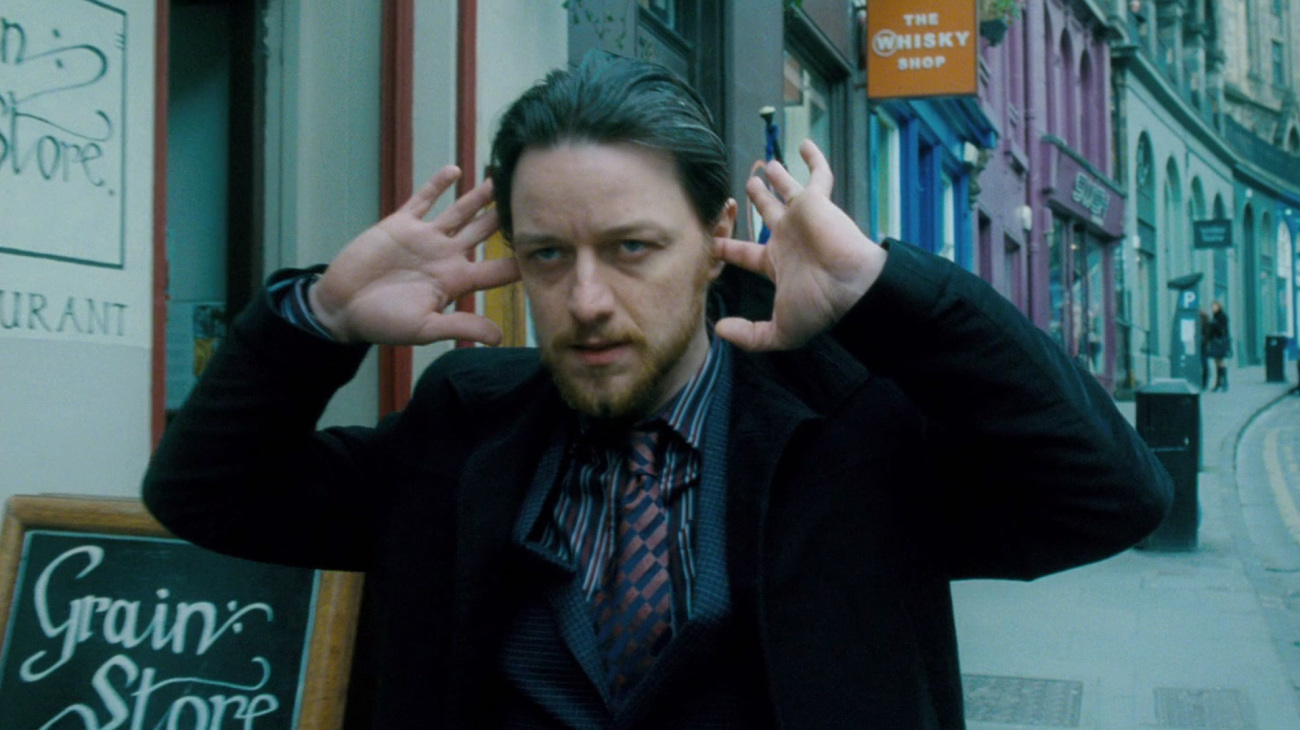
The process of the spectators’ identification with the characters in a film (what is seen by film theoreticians as the second level of identification, the first one – and the one that conditions any other type of participation – being the identification with the eye of the camera) is one of the most puzzling aspects of the filmophanic experience.
Practitioners as well as critics addressed the issue; notions from other fields of study, such as psychoanalysis, were brought to the rescue. But long before these questions were even formulated, others had intuitively understood that this coveted recipe for eliciting identification could be, if not deciphered, at least roughly applied to a certain kind of cinematic product.
The means that was found consisted of attaching to actors a coherent image, a mosaic of their previous roles, a set of values that they were to incarnate every time they appeared in a film. In this way, the simple sight of a certain performer would become a variation on Pavlov’s bell and would draw out an immediate emotional reaction from the audience (albeit from an audience that did not have a very developed critical thinking).
The method worked splendidly; however, as with all actions, there was a counteraction: the creative decision-makers started casting actors in roles that were miles away from their well-established screen personas, in a practice that is known as contre-emploi.
James McAvoy, who was associated by the general public either with the romantic lead or with the naive anti-hero, made a career-defining choice when he accepted to incarnate Irvine Welsh’s debauched Detective Sergeant Bruce Robertson. The actor seems to be permanently reaching a breaking point and immediately pushing it slightly farther, in a manic race that exhausts the viewer and makes him an easy prey to a rare kind of emotion: reluctant empathy.
9. Denis Lavant – Holy Motors (2012) – dir. Leos Carax
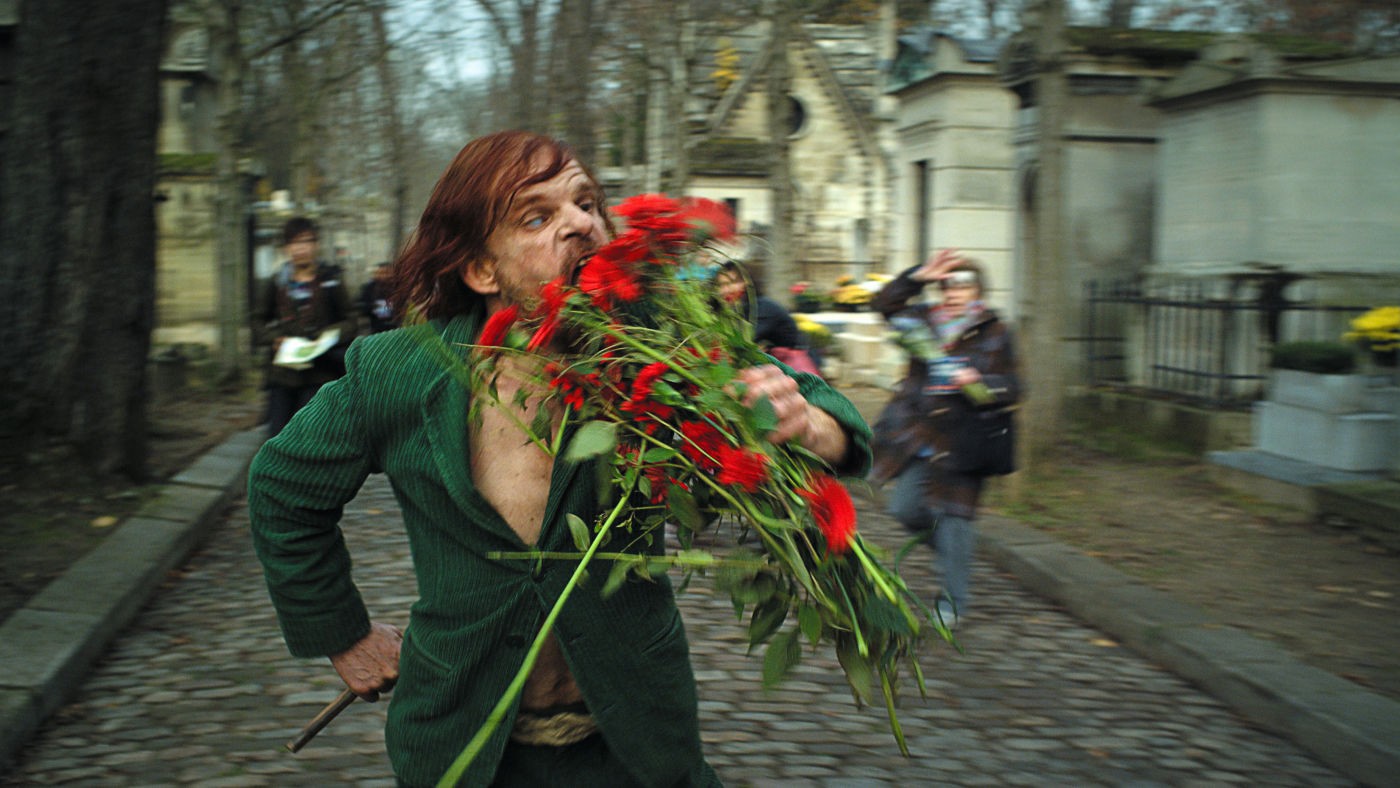
In his influential sum of writings titled “Praxis du cinéma”, American-born French critic Noël Burch wrote a vibrant defense of “obscure” films (using Alain Resnais’ labyrinthic “L’anée dernière à Marienbad” as an example), asserting that it was a philistine reflex of a certain branch of theoreticians and cinephiles to constantly try to assign meaning to all works of art. Some of them, declared Burch, were made to be apprehended with the senses, not with the intellect, and certainly not with a rigid, normative intellect.
Despite the critic’s sensible points, most cinema enthusiasts continue to peer behind the curtain of images and sounds, trying to find a cohesiveness they demand out of art, for lack of finding it in life. Of course, some films are a better playground for all sorts of assumptions and speculations concerning the author’s real (and sole) intention.
Mercurial auteur Leos Carax (who left its mark on the French film production system by insisting on entirely recreating the Pont Neuf for the shooting of his “Les Amants du Pont Neuf”, going dramatically over budget and breaking the record of the most costly setting in the history of the French industry) certainly added his brick to the collection of abstruse works of art with his latest effort, “Holy Motors”.
One of the many interpretations of this infectiously kinetic and euphoric film is that it is an allegory of the work of the actor, always changing skins and effortlessly slipping into varied molds. In any way, the viability of this presumption does not impact on Denis Lavant’s dazzling, versatile, sometimes threatening performance that is, in and of itself, a roaring ode to the actor’s significance.
8. Roberto Benigni – La vita è bella (1997) – dir. Roberto Benigni
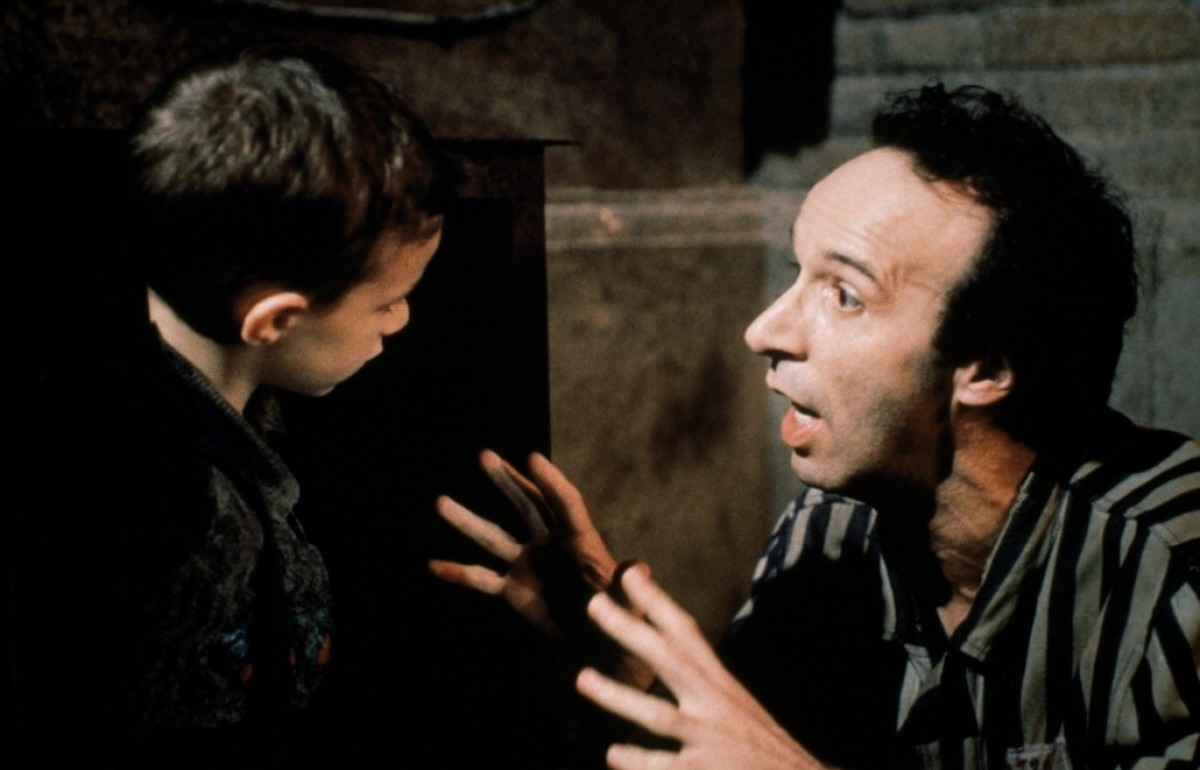
Transgression brings about two levels of freedom: the first resides in consciously breaking the mold and searching for new means of expression; the second is more subterranean and consists of taking advantage of the shock value of a certain aspect and using it as a diversion for other excesses that will therefore pass unnoticed.
Roberto Benigni was certainly aware that his treatment of the Holocaust through the intermediary of the codes of the commedia dell’arte (or of the commedia all’italiana, a film genre that bloomed between the late fifties and the early seventies) would generate controversy.
After all, even a conventional attempt at describing the plight of Jews during the second world war, Gilo Pontecorvo’s “Kapo”, was severely dismissed as being “immoral” by French critic and film-maker Jacques Rivette, who affirmed that making a traveling towards a dying prisoner caught in the wire fence of a death camp was an abomination, a lack of respect and of responsibility.
But Benigni serenely assumed the high risks of failure. His performance certainly doesn’t defuse the thorny ethical situation: his character is fanciful, erratic, loud and perfectly fits the stereotypical figure of the Meridional jester. But if in his previous films, Benigni was blending in his environment and in the general emotional tone, in “La vita è bella” he clashes with the horror that suddenly swallows his son and himself.
This confrontation exists in the script, yet no plastic element of the finished film (be it the editing or the individual composition of the shots) takes upon itself to render its violence: it is Benigni the performer (as opposed to Benigni the director) that carries all the weight of the enterprise.
He never seems excessive because the whole idea is so daring that it obliterates everything else. Everything else except the genuine emotion that one cannot help but feel in front of the spectacle of Benigni thumbing his nose at history.
7. Al Pacino – Glengarry Glen Ross (1992) – dir. James Foley
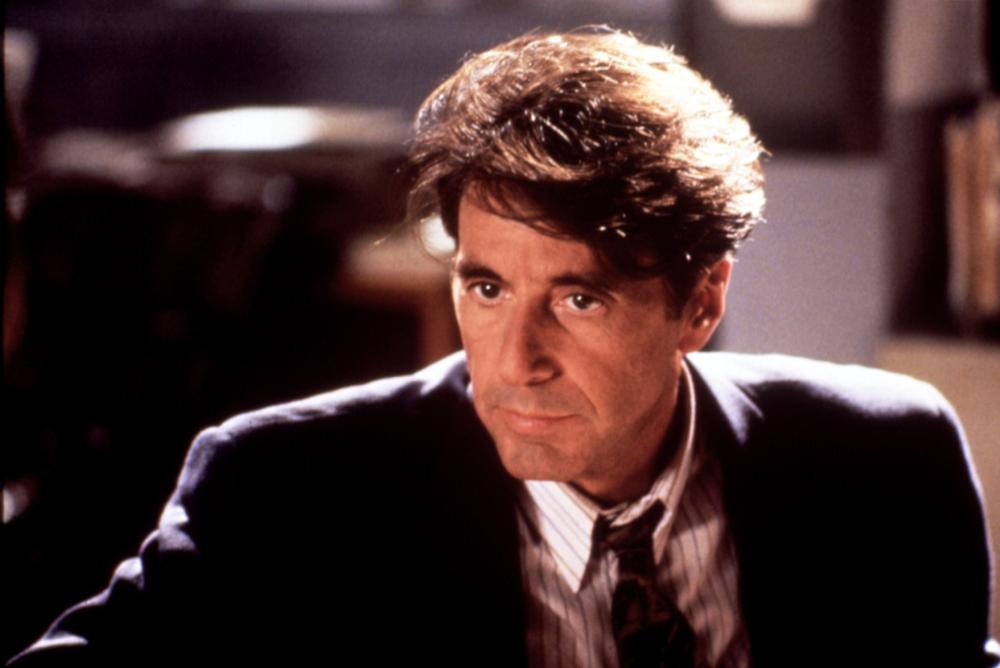
Sometimes, an over-the-top performance is an aesthetic component that is thought of as a thread which will be woven into the brimming tapestry of the finished film. At other times, it acts as a screen of smoke that hides the disruptive effect of the clash between other plastic elements; it works as a binder for films that would otherwise be irksomely heterogeneous.
There is also a third possibility: the over-the-top performance may be the appropriate physical rendition of an incendiary, rageful text. Playwright David Mamet’ Pulitzer prize-winning play “Glengarry Glen Ross” was such a text that vitriolically attacked the callous American economic model.
The myth of the self-made man is replaced by the reality of the modern slave, working incessantly to preserve his slightest social advancement and nourishing on his fellowman’s misery or ingenuousness.
The film adaptation is true to the spirit of its source material and the actors effortlessly embody these sellers who, instead of simply fulfilling needs, create those needs. Al Pacino, who is seen by many as the epitome of over-acting (despite making a name for himself as a restrained method actor and achieving recognition with the infinitely nuanced role of Michael Corleone) catalyzes his prodigious intensity to create Ricky Roma, a “closer” who is at the top of his game and yet is as fearful as the others that every deal he gets may be his final strike of luck.
The actor limpidly suggests that that it is this internal turmoil that fuels his character’s flamboyant behavior and that Ricky Roma is nothing more than a puppet dancing on the ruins of a decent, humane society.
6. John Turturro – Miller’s Crossing (1990) – dir. The Coen Brothers
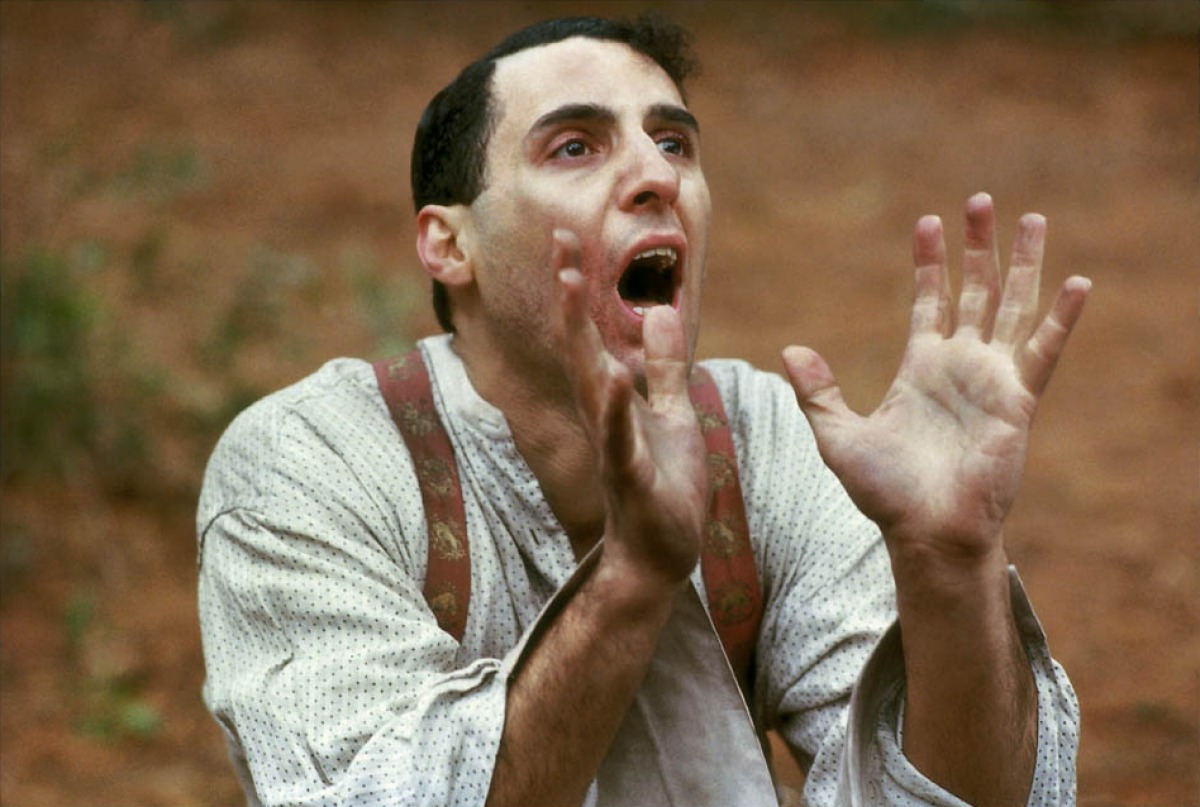
Joel and Ethan Coen have specialized in cinematic appropriations of all kind, varying from parodies to affectionate homages, in a typical post-modern vein. While restructuring genres and working at the disintegration of narrative devices from the inside, the Coen brothers have also taken the time to develop their own recognizable signature. Their auctorial voice is a constructing force that mends the effects of the deconstructing processes inherent to the film-makers’ post-modern approach.
This principle of deconstruction coupled with reconstruction is quite apparent in a pastiche like the brothers’ third feature film “Miller’s Crossing”. The way in which Joel and Ethan Coen replace specific constituting parts of the codes that govern the gangster film genre with idiosyncratic traits that are identifiable in all their oeuvre would require an exhaustive analysis. But an interesting aspect resides in the harmonization of the different schools of acting that manifest themselves in the performances of both the lead and the supporting actors.
The two opposing poles of the axis of acting are Gabriel Byrne and John Turturro, the last one not yet being the epitome of the neurotic Coen Brothers’ anti-hero he would become with “Barton Fink”. To Byrne’s ironic detachment and unflinching gaze, Turturro opposes a remarkable composition: his character, Bernie Bernbaum, is in turn a ball of strained nerves, pitiful, exasperating, squirming, bawling and squalling, and a composed schemer, who is frightening because he is clearly unhinged behind the calm facade.
The frontal clash of these two extremes – Byrne’s and Turturro’s approaches – gives all its worth to the most unforgettable scene of the film, the execution in the woods.